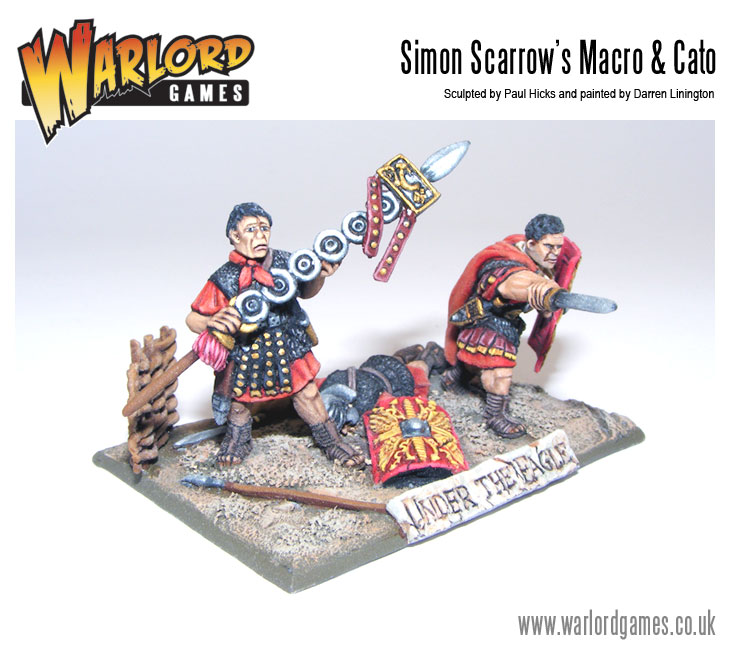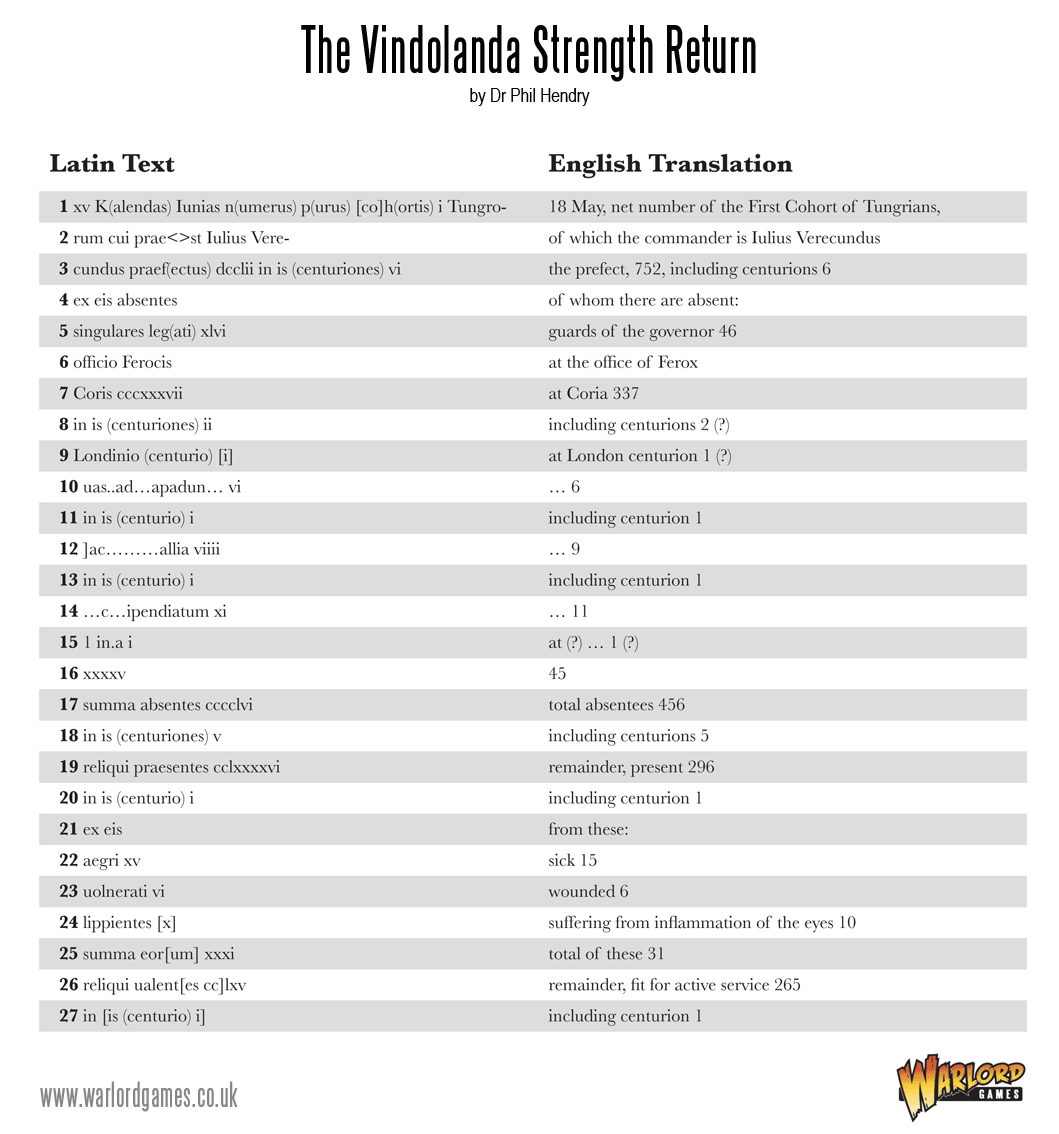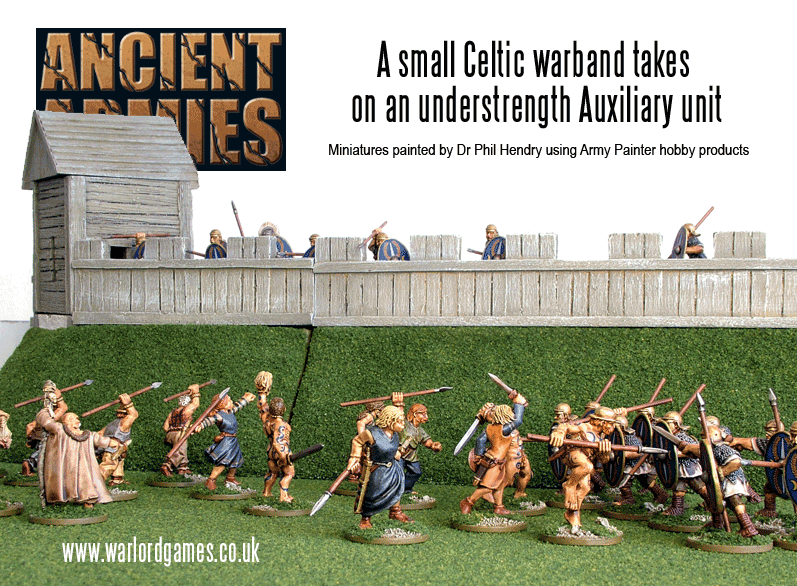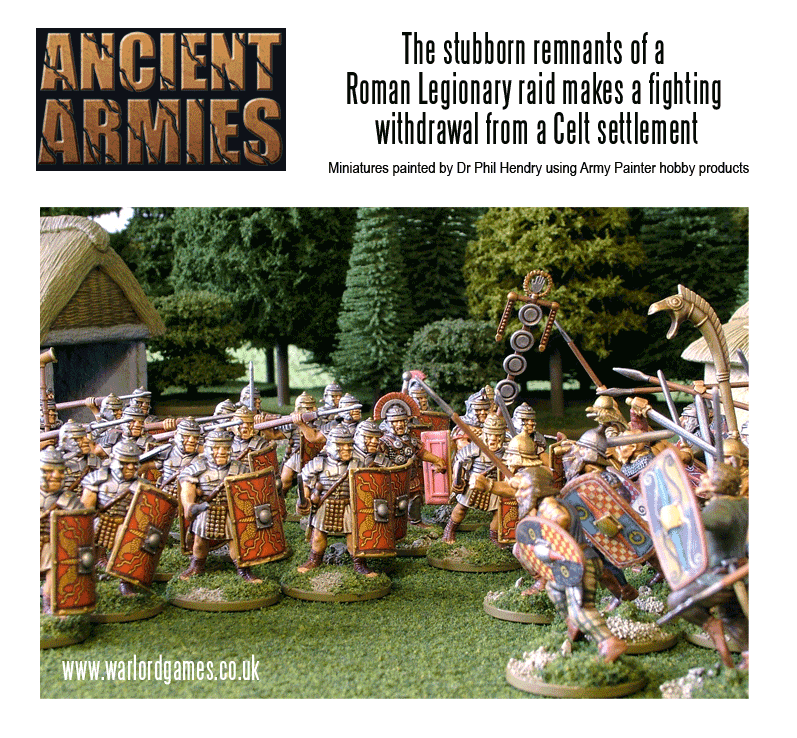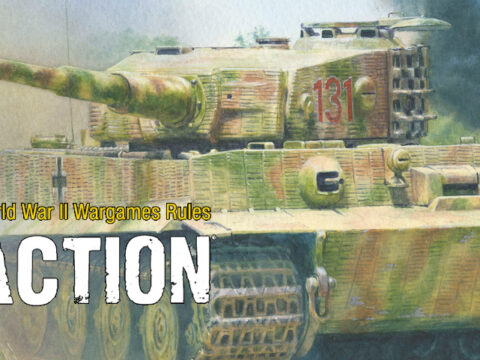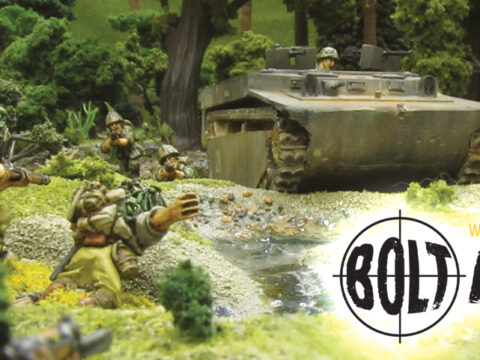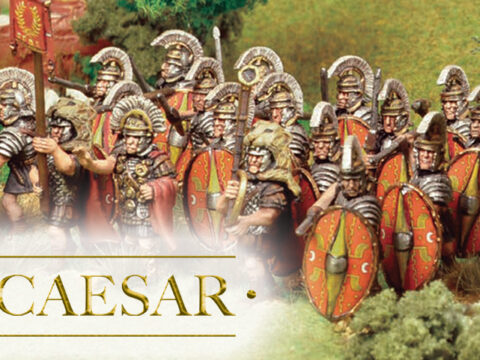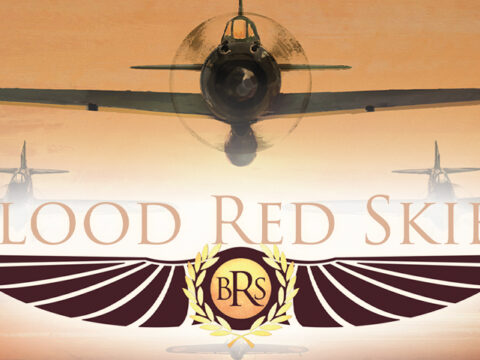(And what it might mean for wargamers)
by Dr. Phil Hendry
The aim of this article is to show that you don’t need to paint hundreds of figures to play meaningful wargames with Early Imperial Romans. I sometimes get a bit fed up with how unimaginative wargamers can be. There ought to be so much more to ancients wargaming than ‘meeting engagements’. I’d like to show that you can have fun (perhaps even more fun), with well-thought out scenarios involving tiny numbers of troops – almost at a role-playing level – think of playing out some of the exploits of Macro and Cato on the table-top.
As a lead-in to this idea, the text and a translation of what I believe to be one of the most important (for wargamers anyway!) of the famed Vindolanda writing tablets: tablet 841, is reproduced below. Don’t be put off by the Latin, or the fact that it’s a list – just glance through the translation, and see what jumps out at you.
The text, like that on a lot of the tablets, is badly eroded, and barely able to be read, even with all sorts of scientific and technological skulduggery. Having said that, the gist of the tablet is clear: the First Cohort of Tungrians doesn’t fit our ‘neat and tidy’ imagining of the Roman army as the first (and perfect) military army. Indeed, it seems to me to be even more real, and modern, simply because of the seeming chaos depicted by the numbers: I am struck by how similar this is to a thoroughly modern unit, with men away on courses, some sick, some on exercise elsewhere, others on other detached duties, leaving little more than a skeleton force at their ‘home base’ – in this case about a third of the unit.
The month is May (probably sometime in the period 92-97 AD) – the time of year when military activity ought to be at its height. Is this strength return unusual? There’s no reason to suppose that it is – it’s simply a ‘random’ find, discarded in the ditch of a fairly unimportant fort at the edge of the empire. It seems like a very mundane document, but what can we, as wargamers, glean from it?
One thing that leaps out at me is the six ‘uolnerati’ – wounded men. I don’t know how good your Latin is but it’s clear they’re not ill, they’re not injured, they are wounded – and that, to me, implies military action, rather than having the ‘flu or falling off the ramparts. So, it looks as though there has been action of some sort – or else how did they get wounded? The question that springs to mind is what sort of action? We have no record of any major action in Britain during this period. Presumably some minor skirmish, too unimportant to have been recorded by any of the standard written sources. Guarding a supply convoy? Had the Brigantes been revolting? Had a warlord of the Selgovae decided to mount a raid across the frontier? Or was this the result of a punitive raid by the Romans, and if so, what were they up to and why? Punishing the aforesaid Selgovae for raiding? Trying to capture a druid before he could stir up too much trouble? The possibilities are almost endless – and should set your mind racing with ideas for scenarios.
One thing is clear though – unless this is a long-planned (and therefore big?) expedition, the Roman force is always going to be a ‘scratch’ force: bring what you’ve got. None of the numbers in the strength return above ‘add up’ to form a recognisable Roman unit: the total numbers are almost correct for a peditate milliary cohort – but there are only six centurions on the strength (only one of whom is present on base). This would, seemingly, be normal for an equitate milliary cohort, but peditate should have ten, according to the orthodox dogma. And it’s commanded by a prefect – milliary cohorts were usually commanded by a tribune. So what’s going on? Is the unit a vastly over-strength (on paper at least – if you include everyone on the books, present or not) quingenary cohort, which is about to become a milliary one? Or is it a milliary one in the process of shrinking into a quingenary cohort? I suspect we shall never know, but one thing is certain: the Roman army wasn’t ‘perfect’ and like modern armies, had a tendency not to follow its own rules. In one way though, it is reassuringly modern and military: reams of paperwork; bureaucracy gone mad!
Given the above, and (for example) the regularity with which archaeologists find bits of lorica segmentata in auxiliary forts (which, according to the orthodox dogma, ought not to be there), things were a lot more fluid, manpower-wise, than our tidy wargamers’ minds might fancy, or like. I suspect that the Roman army doesn’t really fit the conventional picture all that well. Did Legionaries really wear lorica segmentata while auxiliaries wore lorica hamata? Trajan’s column would have us believe so, but is that differentiation merely artistic convention to simplify the picture for the citizens of Rome? Or do we find lorica segmentata at (nominally?) auxiliary forts because of the presence there of legionaries?
22 aegri xv
23 uolnerati vi
24 lippientes [x]
25 summa eor[um] xxxi
26 reliqui ualent[es cc]lxv
27 in [is (centurio) i]
sick 15
wounded 6
suffering from inflammation of the eyes 10
total of these 31
remainder, fit for active service 265
including centurion 1
Given the ‘scatter’ exhibited by the members of one, not untypical, unit, it is not beyond the bounds of possibility for there to be a century or two (even vastly under, or over, strength) of legionaries stationed, albeit temporarily, at any auxiliary fort you care to think of at any given time.
And what does this mean for us? I think it means that, perhaps, ‘anything goes’. We tend to think of the smallest tactical infantry unit of the Roman army as being the century: eighty men, commanded by a centurion, with various others to assist him. But how true is this, given the strength return we have looked at above? Not very, is the answer we must give in the light of the strength return above.
I think, therefore, that it is fairly easy to justify almost any number, or mix, of men you wish for your games – even a single box of 30 legionary figures from Warlord Games could form a legitimate force, and could give you some interesting games. So get them painted and start skirmishing!
I suppose an idea for a game involving no more than a few figures might be in order here.
Roadworks
Optio Geniticus Warticus glanced nervously around him – sixteen men for this working party was surely not enough. Okay, it was nearly a century since the legions, acting on behalf of the Divine Claudius, had conquered Kent, but there was still some simmering resentment amongst the Cantiaci, particularly in the wilder parts of the territory – like here. And someone must have damaged the road – it didn’t dig holes in itself and scatter its own stones about – so, clearly, someone was fed up about something. It would be just his luck to be the one the ire, however misplaced, was directed at.
Meanwhile, just over the hill, Tractorix, younger son of Chelseix, fingered his sword nervously – where had that dratted Discoverix got to – surely he hadn’t chickened out? This had been his idea too – to dig up a portion of the road – it was his great-grandfather’s prize onion-growing patch that the Romans had built their road through, after all.
All you need for this game is about sixteen Romans (including an Optio – who perhaps ought to have an optio’s finger ring, and staff, but if you can’t be bothered converting a figure, just find one a bit different to all the others in some way) and a couple of dozen ragged, angry, Brittunculi. If you want some ‘local colour’ a few un-armoured legionaries with spades and picks to form the working party might be nice, but I would be inclined just to use armoured legionaries – they’ll be joining the fight almost straight way.
The table (4’ square?) needs a road, running near one edge, a hill, and maybe some broken ground, a marsh or a patch or two of woodland. Start off with half the Romans on the road and the rest no more than 6” from the road. The Celts start no more than 3” from the opposite board edge.
As for rules, Mordheim or Lord of the Rings would probably both work quite well for small skirmishes like this. Personally, I am a fan of Lord of the Rings for this sort of game. I’d probably treat the optio and two Celtic leaders as minor heroes, with a point or two of Might and Fate each, and slightly increased characteristics. I’d give the Roman soldiers a higher Defence (5?) to reflect their better armour and shield, and equip them with throwing spears and hand weapons (Fight value 4/4+), with the Celts having Fight value 3/4+ and being equipped on a ‘What You See is What You Get’ basis.
Glossary
Auxiliary: a non-citizen soldier, enlisted for 25 years, after which he’d be granted citizenship.
Brigantes: a British tribe from what is now Northern England.
Brittunculi: a pejorative term for the British – literally ‘nasty little Britons’.
Cantiaci: a British tribe from what is now Kent.
Centurion: an officer, commander of a century – the smallest tactical unit of the Roman army.
Cohort: the basic unit of the Roman army – roughly equivalent to a battalion in modern terms.
Equitate: a unit composed of both cavalry and infantry.
Legionary: a citizen soldier – the backbone of the army.
Lorica hamata: chain mail.
Lorica segmentata: armour made from strips of iron.
Milliary: a ‘large’ cohort, of nominally 800 men.
Optio: the centurion’s second-in-command.
Peditate: foot soldiers.
Quingenary: a ‘small’ cohort, nominally consisting of 480 men.
Selgovae: a British tribe, occupying part of what is now Southern Scotland

